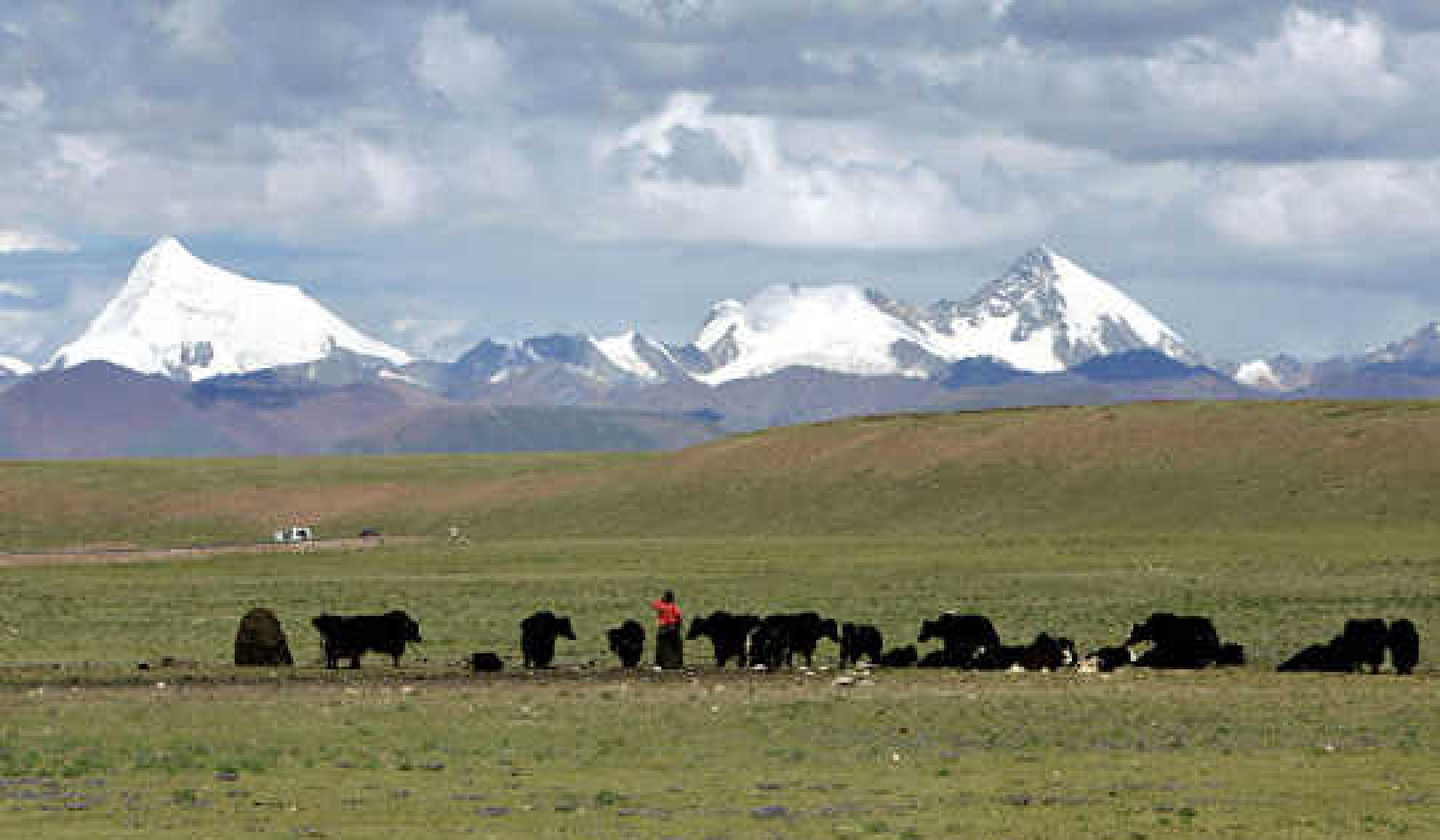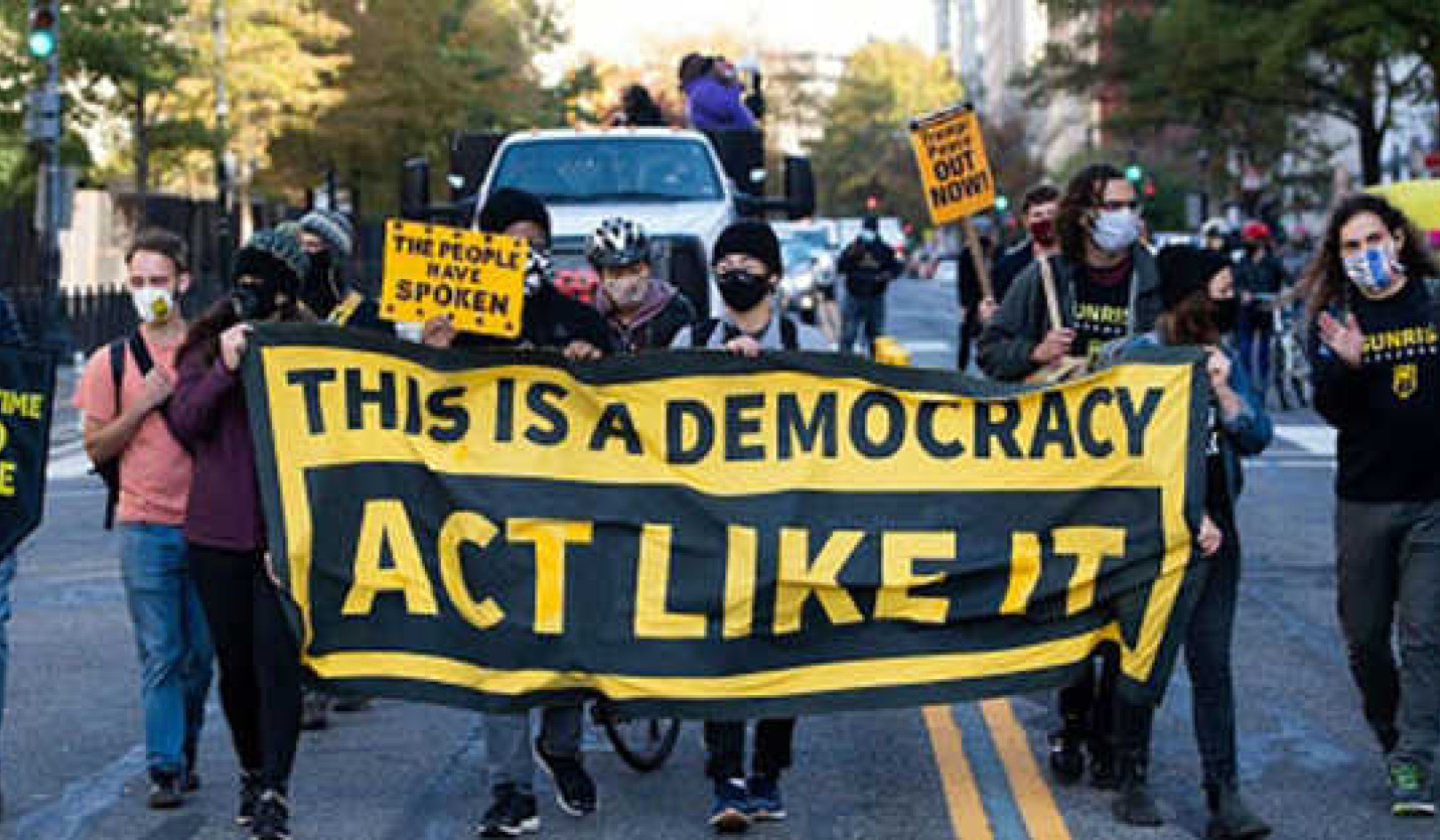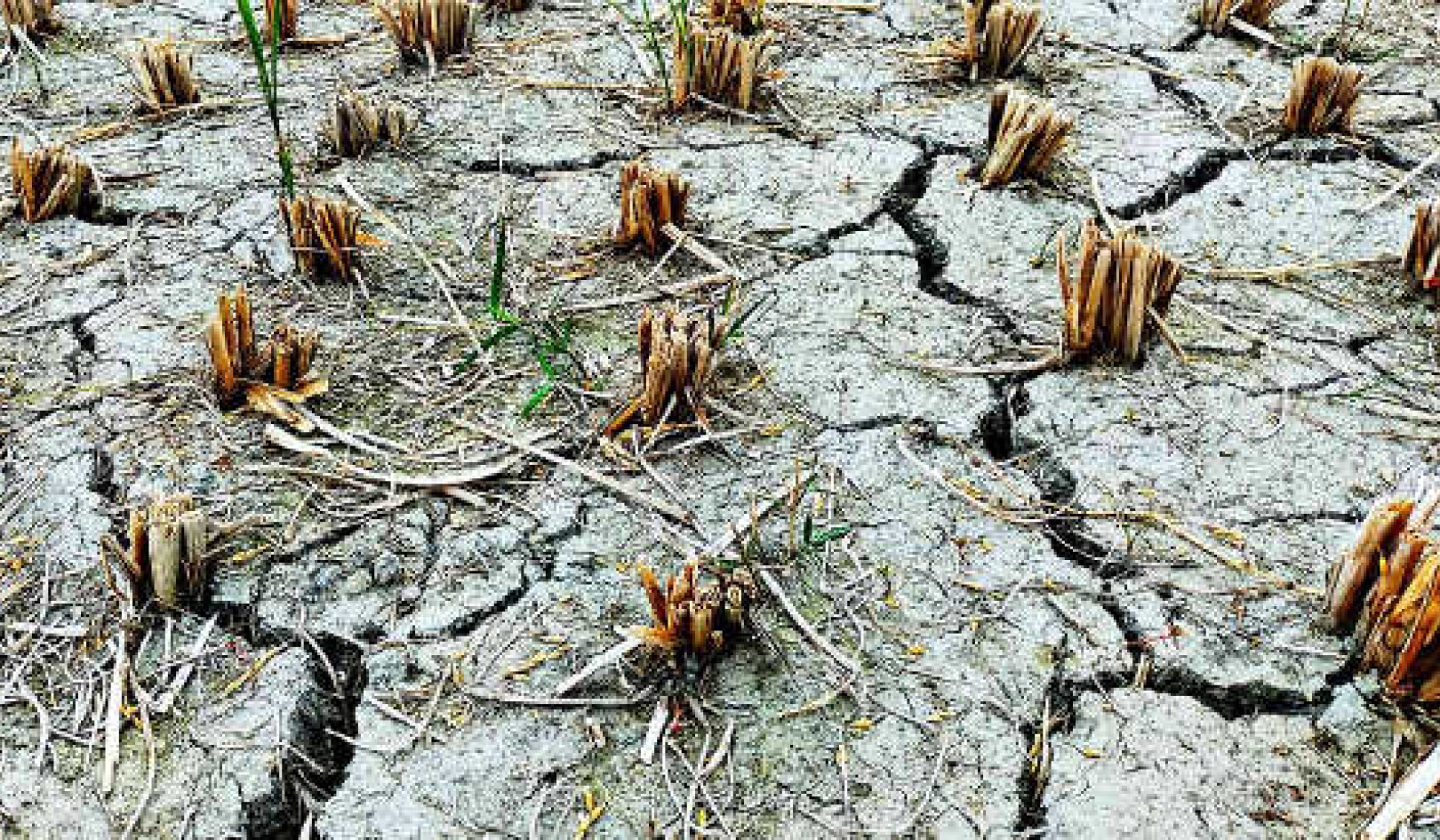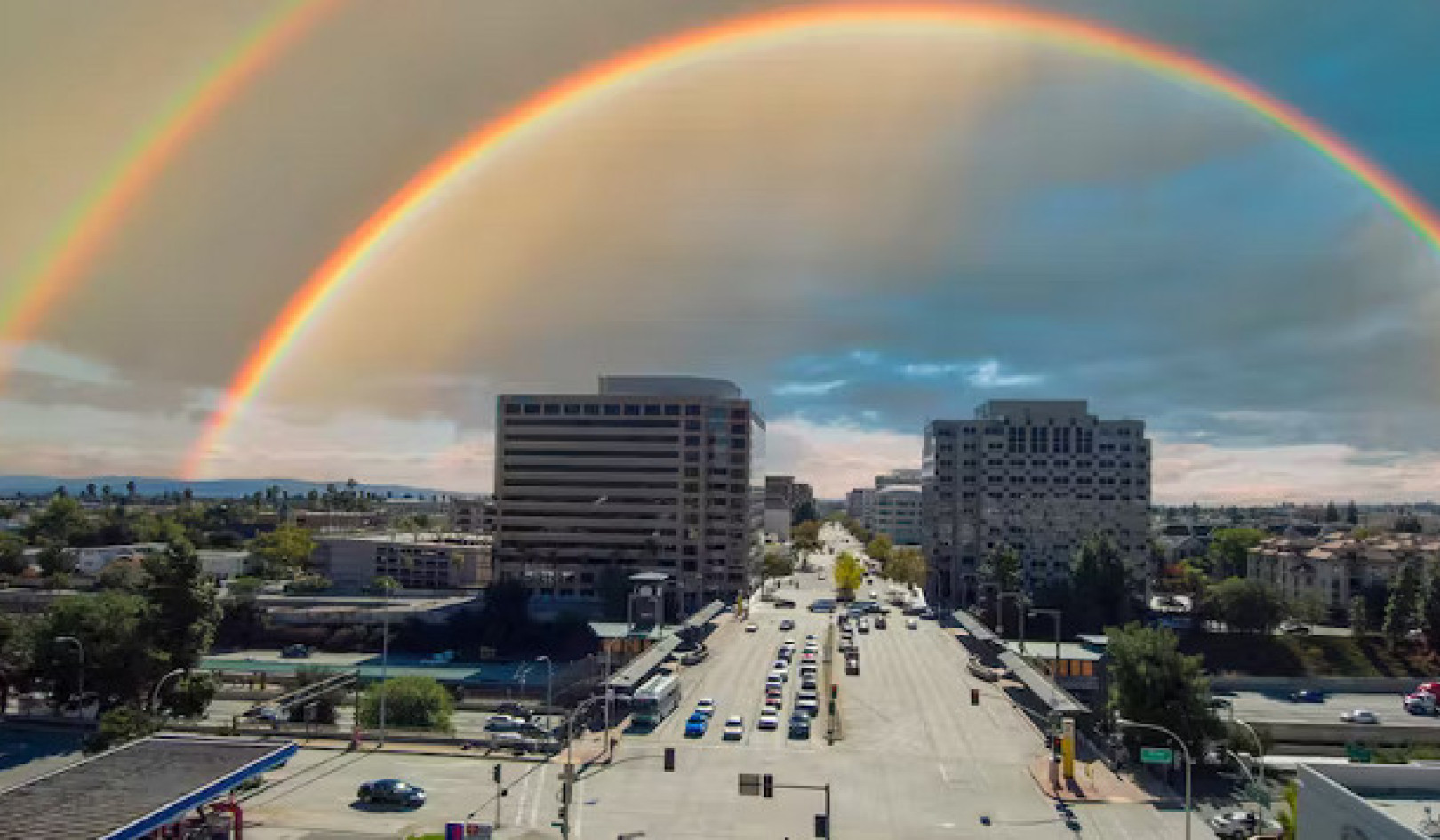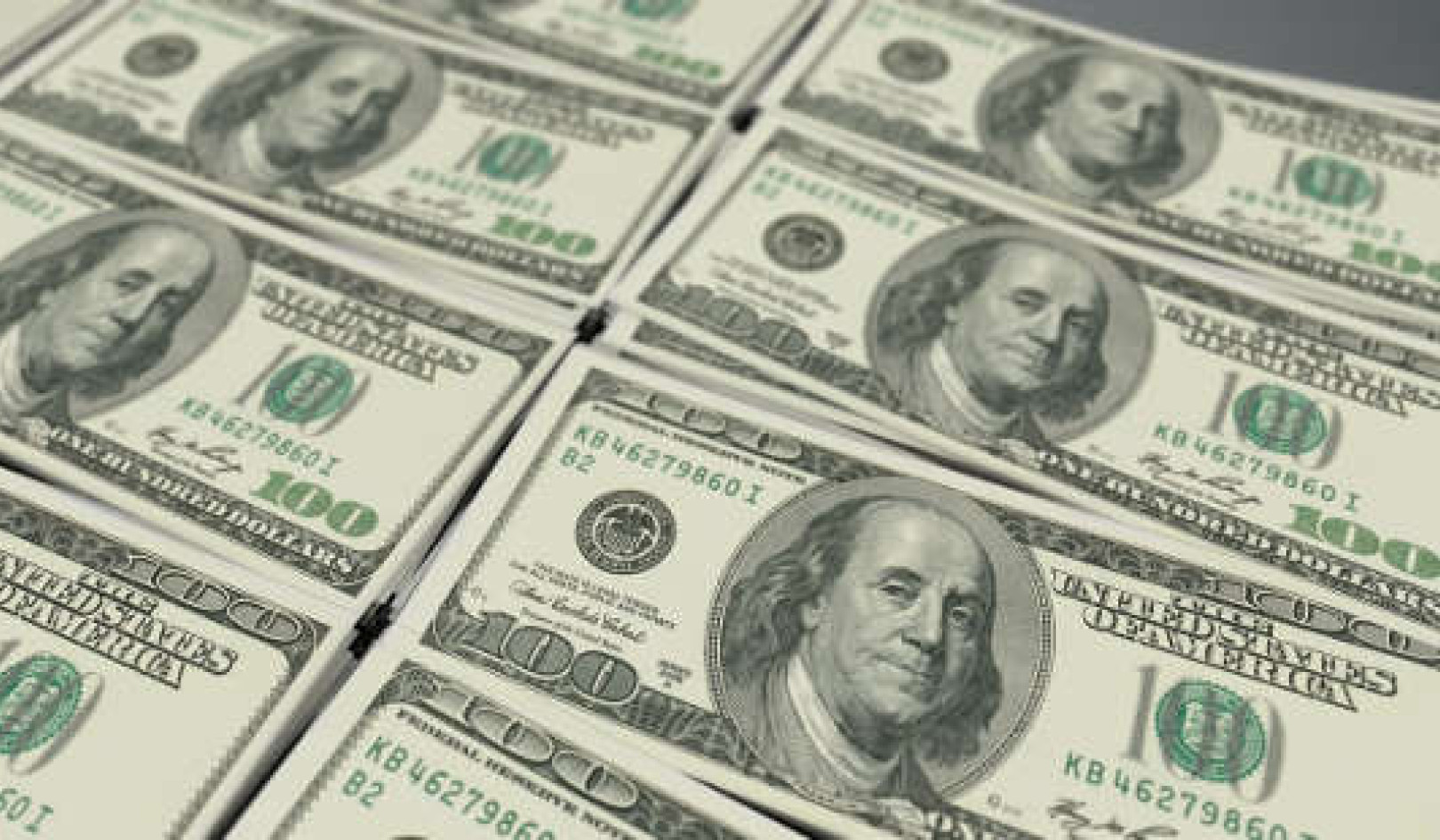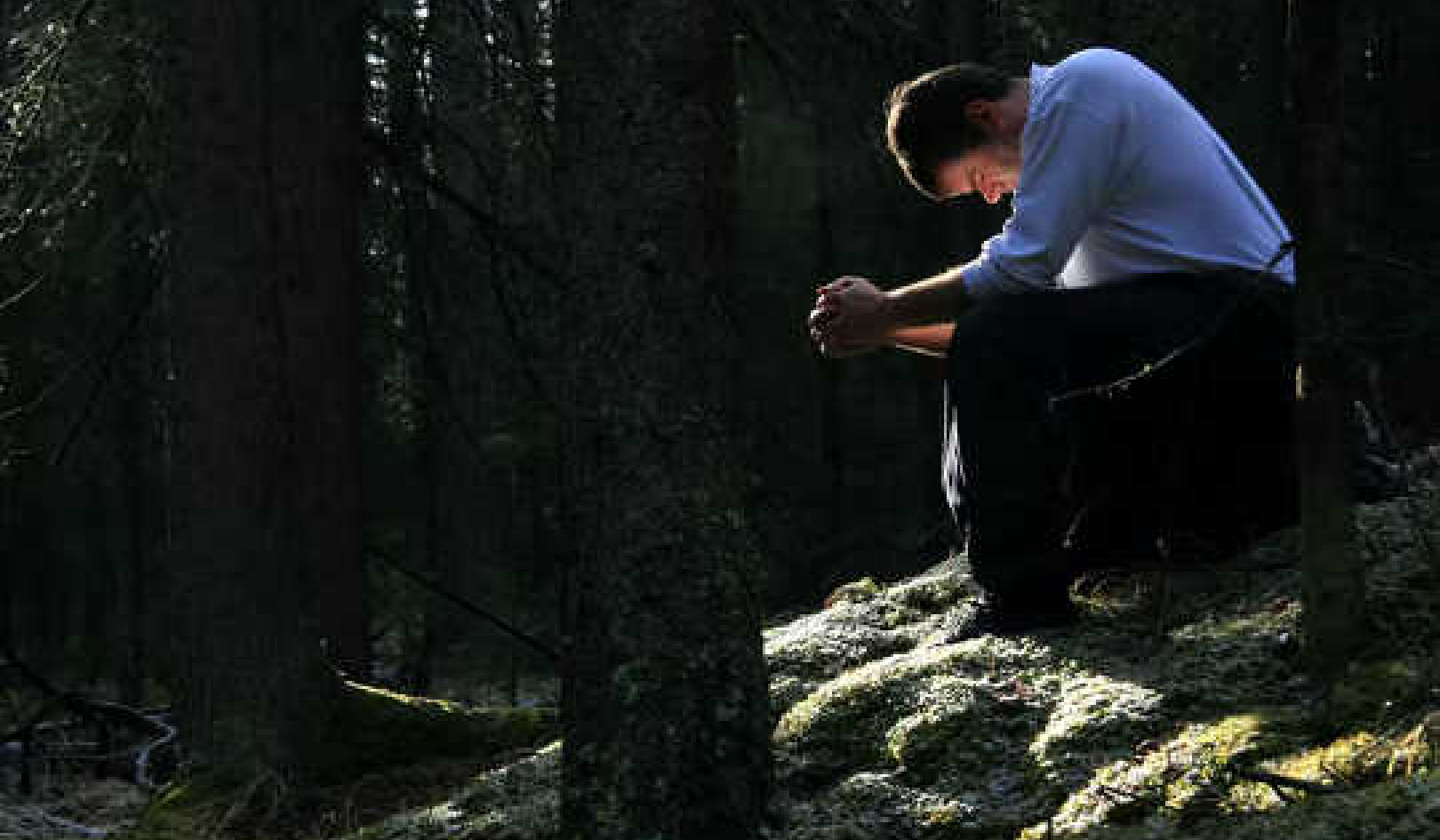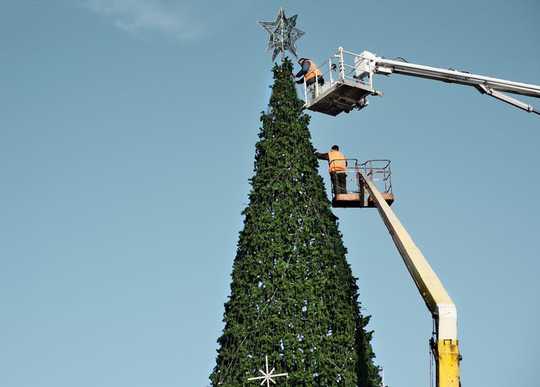 Canada imported more than $60 million of artificial trees in 2017, almost all from China. (Shutterstock)
Canada imported more than $60 million of artificial trees in 2017, almost all from China. (Shutterstock)
It’s the holiday season again, and in the midst of making to-do lists and prepping for festive dinners, some people will once again ponder whether it is better for the environment to buy an artificial Christmas tree or to opt for the real thing.
It’s a good question to ask. We’re in the midst of a climate emergency and are becoming increasingly aware of our environmental impact.
Many of us are more likely to think about climate change when making purchases through the year. It makes sense to wonder if leaving trees in the ground to continue growing might not make a better contribution to the fight against climate change.
A decade to grow or keep
A natural tree of average size (2-2.5 metres tall, 10-15 years old) has a carbon footprint of about 3.5 kilograms of carbon dioxide equivalent (CO2e) — about the same as driving a car 14 kilometres.
This footprint increases dramatically if the tree is sent to landfill. When it decomposes, it will produce methane, a more potent greenhouse gas than carbon dioxide, and generate a much larger footprint — close to 16 kilograms of CO2e. If the tree is composted or recycled, a common practice in many major cities — the environmental footprint remains low.
By comparison, a two-metre tall artificial tree has a carbon footprint of about 40 kilograms CO2e based on the production of the materials alone.
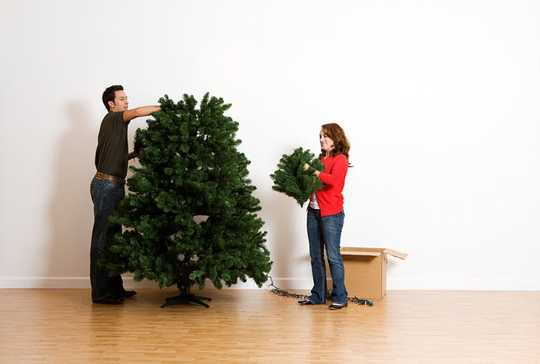 Some artificial Christmas trees cost upwards of $300. (Shutterstock)
Some artificial Christmas trees cost upwards of $300. (Shutterstock)
Different types of plastics are used in artificial tree products. Some, like polyvinyl chloride, are very difficult to recycle and should be avoided. Polyethylene trees, which tend to look more realistic, have higher price tags.
The vast majority of artificial trees are produced in China, Taiwan and South Korea. Shipping from these distant factories increases the trees’ carbon footprint.
An artificial tree has to be re-used for 10-12 years to match the footprint of a natural tree that is composted at end of life. Even then, recycling the materials in artificial trees is so difficult that it is not common practice. Some old trees can be repurposed, but most artificial products will end up in a landfill.
Burning trees
This gives ecologically minded Canadians some sense of the impacts of their choice. But other factors are also at play. Real trees are becoming scarce and more expensive. In the United States, the average price of a real tree in 2019 has increased to US$78 from US$75 in 2018.
Weather has taken a toll on Christmas trees. In the U.S., hot weather and too much rain are considered contributing factors to a shortage of trees, and wildfires damaged or destroyed some farms. Heat waves in 2017 and 2018 killed young seedlings in Oregon and will impact tree supply in years to come.
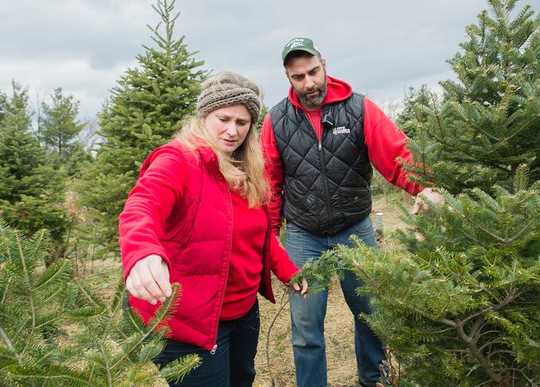 Christmas tree farms in Canada, like this one outside of Montréal, reported sales of $91.2 million in 2017. THE CANADIAN PRESS/Graham Hughes
Christmas tree farms in Canada, like this one outside of Montréal, reported sales of $91.2 million in 2017. THE CANADIAN PRESS/Graham Hughes
In Canada, consumers who want natural trees have been warned to shop early, as many sellers have limited inventory due to fire, frost and insect damage that has accelerated over recent years.
Climate change will likely exacerbate these factors and could drive up the price of trees for years to come. Researchers have found that certain pests, like the balsam twig aphid, already a major pest in the Québec Christmas tree industry, will likely increase in a warming climate and harm commercial fir plantations.
Oh, Christmas tree
Economics has also played a role in tree availability. Today’s trees were planted around the time of the Great Recession of 2008.
The impacts of this economic downturn were far-reaching in the industry. As demand fell during those years, many growers went out of business. This reduced the number of trees planted and contributed to the scarcity in today’s Christmas tree marketplace.
The Canadian Christmas Tree Growers Association has shrunk dramatically in the past 15 years — from 300 members to about 80 today.
Is it time to give up on real Christmas trees?
Holiday trees provide wildlife habitat, protect soil, moderate floods and drought, filter air and sequester carbon while they grow. Tree farms also provide local economic benefits that don’t come with foreign-made products.
The changing climate may not mean the end of holiday trees. Studies carried out in the Appalachians suggest that trees at lower elevations may be more likely to suffer from pests and damage as climate change progresses. They also found that tree farms at higher elevations may benefit from a longer growing season.
Research into the effects of temperature and precipitation extremes on cone formation may help growers maintain or enhance tree growth in response to changing environmental conditions. Forward-looking Christmas tree farmers may start planting a greater diversity of tree species to weather the impacts of climate change.
It is clear, however, that holiday trees face increasing risks from a changing climate and not all producers will be able to adopt cutting-edge methods; some will not choose the right trees.
Most Christmas tree operations in Canada are family businesses without deep pockets, and the costs of relocating tree farms to more friendly climes or higher elevations may put others out of business. The cost of a Christmas tree will likely continue to rise in the future.
About the Author
Warren Mabee, Director, Queen's Institute for Energy and Environmental Policy, Queen's University, Ontario
This article is republished from The Conversation under a Creative Commons license. Read the original article.
Books on The Environment from Amazon's Best Sellers list
"Silent Spring"
by Rachel Carson
This classic book is a landmark in the history of environmentalism, drawing attention to the harmful effects of pesticides and their impact on the natural world. Carson's work helped to inspire the modern environmental movement and remains relevant today, as we continue to grapple with the challenges of environmental health.
Click for more info or to order
"The Uninhabitable Earth: Life After Warming"
by David Wallace-Wells
In this book, David Wallace-Wells offers a stark warning about the devastating effects of climate change and the urgent need to address this global crisis. The book draws on scientific research and real-world examples to provide a sobering look at the future we face if we fail to take action.
Click for more info or to order
"The Hidden Life of Trees: What They Feel, How They Communicate?Discoveries from A Secret World"
by Peter Wohlleben
In this book, Peter Wohlleben explores the fascinating world of trees and their role in the ecosystem. The book draws on scientific research and Wohlleben's own experiences as a forester to offer insights into the complex ways that trees interact with one another and the natural world.
Click for more info or to order
"Our House Is on Fire: Scenes of a Family and a Planet in Crisis"
by Greta Thunberg, Svante Thunberg, and Malena Ernman
In this book, climate activist Greta Thunberg and her family offer a personal account of their journey to raise awareness about the urgent need to address climate change. The book provides a powerful and moving account of the challenges we face and the need for action.
Click for more info or to order
"The Sixth Extinction: An Unnatural History"
by Elizabeth Kolbert
In this book, Elizabeth Kolbert explores the ongoing mass extinction of species caused by human activity, drawing on scientific research and real-world examples to provide a sobering look at the impact of human activity on the natural world. The book offers a compelling call to action to protect the diversity of life on Earth.



















